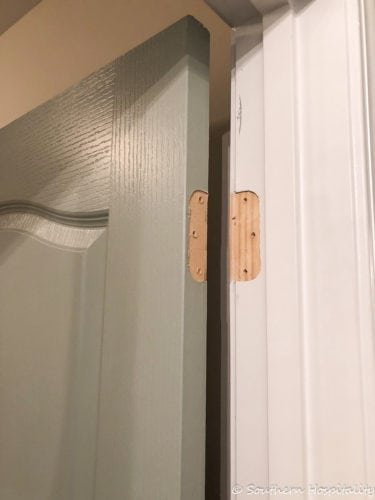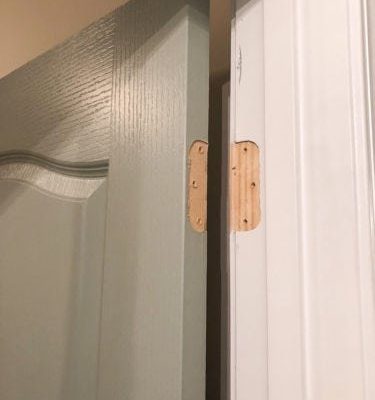
Imagine you’re spending a cozy afternoon upgrading your home, only to find that your newly installed door isn’t working as it should. No worries! We’ll break down the troubleshooting process step-by-step, so you can enjoy the beauty and functionality of your custom-built door. Whether you’re dealing with a stiff handle or misaligned hinges, we’ve got your back.
Let’s get started by understanding the different types of hardware that can be found on your door. From knobs and handles to hinges and locks, each plays a vital role in how your door operates. By familiarizing yourself with these components, you’ll be better equipped to troubleshoot any potential issues.
Identifying Common Hardware Issues
Before we dive into troubleshooting, it’s essential to recognize the common problems you might encounter with your custom-built interior door hardware. These issues can range from minor annoyances to significant obstacles that prevent your door from functioning properly.
- Squeaky Hinges: Over time, hinges can accumulate dirt and grime, leading to that annoying squeak.
- Sticking Door: If your door sticks, it might be misaligned or swollen due to humidity.
- Loose Handles: Handles can become loose over time, making them difficult to operate.
- Locked Out: A malfunctioning lock can leave you stranded, especially if it’s a keyless entry system.
You might be wondering how to approach these issues. Each one requires a slightly different method, but don’t worry—we’ll go through them step-by-step. Just think of it like navigating a simple recipe: gather your ingredients and follow the instructions carefully.
Tackling Squeaky Hinges
Those squeaky hinges can turn peaceful moments into annoying distractions, can’t they? Fortunately, fixing them is straightforward. First, you’ll want to apply some lubricant like WD-40 or even regular household oil to the hinges. Here’s how to do it:
1. Clean the Hinges: Use a cloth to wipe away any dirt or debris around the hinge area.
2. Apply Lubricant: Spray or apply a small amount of lubricant directly onto the hinge pin.
3. Move the Door: Open and close the door several times to work the lubricant in.
If the squeaking persists, you might need to take the hinge off and clean it more thoroughly. Sometimes grime builds up, and a good scrub is all it takes for that smooth operation again.
Addressing a Sticking Door
A sticking door can be frustrating, especially when you just want to walk through without a hassle. This issue is often caused by humidity changes or a misalignment. Here’s how to troubleshoot it:
1. Check the Alignment: Close the door and examine the gaps between it and the frame. Is there uneven spacing? If so, the door might be misaligned.
2. Adjust the Hinges: Loosen the screws on the hinges and reposition them slightly. Tighten them back up after adjusting.
3. Sand the Edges: If your door is swollen, you may need to sand down the edges that are sticking. Just a little bit can make a significant difference.
Remember, a little patience goes a long way here. This isn’t a race; take your time to ensure everything is aligned correctly!
Fixing Loose Handles
A loose handle can make you feel like you’re playing a game of tug-of-war every time you try to use the door. Luckily, tightening a handle is usually a quick fix. Here’s how you can secure it:
1. Locate the Screws: Most door handles have screws underneath the handle or on the side.
2. Tighten the Screws: Use a screwdriver to tighten any loose screws. If the screws seem stripped, you may need to replace them.
3. Check for Wobbling: After tightening, give the handle a gentle shake. It shouldn’t move much at all.
If your handle is still loose after tightening, there might be a more serious issue. Sometimes, you may need to replace the handle or consult a hardware store for further assistance.
Resolving Locked Out Issues
Nothing is more annoying than a door that won’t unlock when you need it to. This issue can arise with both traditional and keyless locks. Here are steps to fix it:
1. Check the Battery: For keyless locks, a dead battery is often the culprit. Replace the battery and see if it unlocks properly.
2. Inspect the Mechanism: If it’s a traditional lock, use a little graphite powder in the keyhole to help the mechanism move smoothly.
3. Align the Lock: If the lock seems misaligned, you may need to adjust it by loosening the screws and repositioning.
If you still can’t get the door open, consider calling a locksmith. Sometimes it’s best to leave it to the pros rather than risk further damage.
Understanding Door Hardware Types
Before you attempt any troubleshooting, it’s helpful to understand the types of hardware involved in your custom-built door. From knobs to locks, here’s a quick breakdown:
- Knobs: Traditional and often more straightforward to replace.
- Handles: These can offer a modern touch but may require more careful installation.
- Hinges: Essential for movement; keep them well-lubricated!
- Locks: These come in various types (deadbolts, keyless) and may require specialized care.
Understanding these components helps you identify where issues may arise. You wouldn’t try to fix a car without knowing what the engine looks like, right?
When to Call a Professional
Sometimes, despite your best efforts, problems persist. Here’s when it’s wise to call in a professional:
1. Severe Misalignment: If your door is severely misaligned, it might be warped or improperly installed.
2. Complex Lock Systems: If the locking mechanism is complex and you can’t get it working, don’t risk damaging it.
3. Persistent Hardware Issues: If you find that you’re repeatedly fixing the same issues, it may be time for a hardware upgrade.
Calling a professional isn’t a sign of defeat; it’s about ensuring the job gets done right.
Preventive Measures for Door Hardware
Now that you’ve got a handle on troubleshooting, let’s talk about prevention. Keeping your door hardware in top shape means less hassle down the line. Here are some easy steps:
1. Regular Maintenance: Periodically check hinges and handles for signs of wear or looseness.
2. Lubricate Hinges: A quick squirt of lubricant can go a long way in keeping things quiet and functional.
3. Watch for Changes: If the door starts sticking or squeaking more than usual, don’t wait too long to address it.
By taking these steps, you can ensure your custom-built interior door stay functional and looking great.
In closing, troubleshooting hardware on a custom-built interior door doesn’t have to be intimidating. By following the steps outlined above, you can tackle common issues with confidence. From squeaky hinges to tricky locks, you now have the knowledge to keep your door working as it should. Enjoy the elegance and functionality of your door, and remember, a little maintenance goes a long way!
